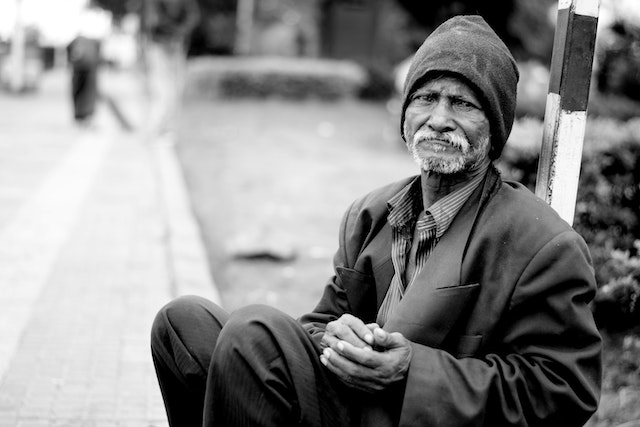What is poverty?
- Poverty is a situation where a person is unable to fulfil his basic needs, such as food, clothing and shelter. Poverty is caused due to multiple factors such as lack of education, lack of available jobs, natural disasters, as well as economic turmoil.
- In India, the Below Poverty Line (BPL) is used by the government to measure the number of people in poverty and to provide them with assistance. In 2021, the BPL line was decided to be Rs 972 per month for a household of four people in Rural areas, and Rs 1407 per month for a household of four people in Urban areas. These amounts are revised periodically by the government based on the changes in the cost of living and economic conditions.
Current situation:
- According to the MPI released by UNDP, 415 million people exited poverty in India from 2005-06 to 2019-21
- According to IMF, extreme poverty in India was at around 0.86% in 2020.
- Also according to the MPI, about 16.4% of India’s total population still lives in poverty as per the 2019-2021 data.
- India still remains with the highest number of poor people worldwide with 228.9 million, followed by Nigeria with 96.7 million people as per the Global Multidimensional Poverty Index (MPI) report based on the data of the year 2020. Out of 228.9 million people in poverty, 97 million are children.
- The report also stated that the occurrence rate of poverty in India has dropped to 16.4% in 2019-21, from 51.1% in 2005-06. MPI is prepared by United Nations Development Programme (UNDP) and Oxford Poverty and Human Development Initiative (OPHI).
- Covid 19 has negatively affected the progress of the government in bringing out people from poverty. As 90% of the Indian population works in an unorganized sector with no job security, Covid 19 pushed many of them to poverty and stopped those who were trying to come out of it before.
Challenges:
- Poverty is not concentrated in one area or state but it is widespread in different parts of the country, making it difficult to come up with an effective solution.
- 90% of the people in poverty live in rural areas of the country.
- Certain social-economic groups in India are more vulnerable to going into or staying in poverty.
- There is a disparity between states when it comes to poverty reduction plans like the development of infrastructure, job opportunities, development of infrastructure for higher education, etc.
- The education system is still not focusing on teaching skills that are in demand in different industries resulting in students not being able to find jobs after completing their education.
- Medical care is expensive in India. Out-of-pocket health spending is still high, despite the progress in government expenditure. One can lose all his/her savings at the time of any illness of their loved ones.
- In numerous areas of socio-economic development projects, corruption continues to be a serious issue.
- The government is not conducting Consumption Expenditure Survey (CES), which was last conducted in 2017-18. The data from this survey is the basis for determining the extent of poverty in the country, as well as setting the Below Poverty Line.
Steps taken by the government:
- National Rural Employment Guarantee Act (MGNREGA), which provides 100 days of wage employment per household to rural people.
- National Food Security Act, which provides subsidized food to poor families living under the poverty line.
- Pradhan Mantri Gramin Awaas Yojana, which provides free housing for poor people living in rural areas.
- New Education Policy 2022 aims to transform the existing education system and focus on the skill development of the student.
- Pradhan Mantri Jan Dhan Yojana, which has increased financial inclusion in rural areas and helped in providing direct transfer of government assistance money to their bank account.
Conclusion:
Millions of people in India are suffering from the pervasive and complicated problem of poverty. It is fueled by a lack of proper infrastructure, a lack of affordable medical facilities, a lack of access to education, and a lack of job opportunities. In recent years we have also seen many people losing their livelihoods due to climate disasters. The Indian government has put in place a number of programmes and initiatives to combat poverty, but more must be done if the root causes of poverty are to be effectively addressed. To effectively combat poverty in India, a comprehensive long-term strategy involving the public sector, the commercial sector, civil society organisations and support from common people would be required.
Photo by Pixabay
Your Turn…
What’s your take on this topic? Express your point of view through the comment section below. And subscribe to our blog to read answers to the trending GD topics.
Copyright @ Group Discussion Ideas.


poverty surgely increase due to core problems in INDIA like over population , low literacy rate in sates , lack of awareness of the schemes launched by the government, no proper infrastructure to kids in rural areas for their education thus the foundation of the country outcomes to be weak, because the children are the future pillars of growth in every expect for a country thus nurturing them must be the priority in a long .
The main cause of this boom poverty is the lack of confidence in the youth or the cliche of this ethics that comes from the ancient history we are not try to overcome this problem but enhancing it seriously. I don’t know why the bucolic people become poor and rich become richer is this right to us
Poverty is rising due to the over population in a nation. Also it is a serious issue which country should look after it or else it will act as barrier to the development of the country. Once should understand the concern appropriately. Govt. are taking the measures but once should that the measures are been used rightly.